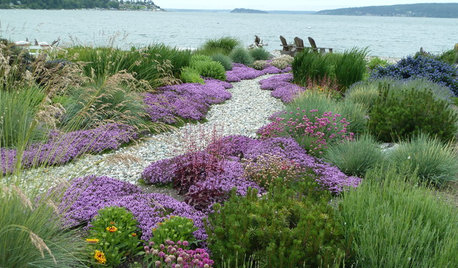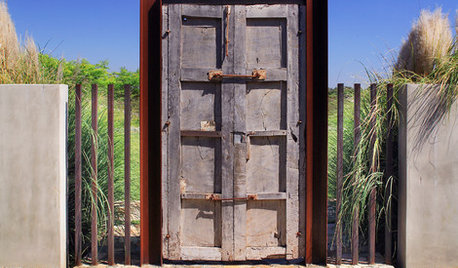Is Tall Fescue & Bermuda Grass good choice for Mojave Desert?
jordanz
13 years ago
Related Stories

GARDENING GUIDES5 Great Grasses for a New Lawn
Learn about maintenance, wear tolerance, ideal climate and more for these top turf choices to pick the right one for you
Full Story
MOST POPULARMeet a Lawn Alternative That Works Wonders
Carex can replace turfgrass in any spot, is low maintenance and adjusts easily. Add its good looks and you’ve got a ground cover winner
Full Story
PLANTING IDEAS7 Ways to Use Drifts and Masses In Your Garden
Whether in formal or natural landscapes, grasses or succulents planted en masse elevate the garden
Full Story
LANDSCAPE DESIGN7 Low-Maintenance Lawn Alternatives
Turf isn't the only ground cover in town. Get a lush no-grass lawn with clover, moss and other easy-care plants
Full Story
MATERIALSMesquite: The Brawny Beauty for All Over the Home
Denser than other hardwoods and sporting beautiful coloration, mesquite makes a fine material for flooring, countertops, furniture and more
Full Story
GARDENING GUIDESNew Ways to Think About All That Mulch in the Garden
Before you go making a mountain out of a mulch hill, learn the facts about what your plants and soil really want
Full Story
EARTH DAY5 Ideas for a More Earth-Friendly Garden
Consider increasing the size of garden beds, filtering rainwater and using plants to reduce energy use
Full Story
EARTH DAYThe Case for Losing the Traditional Lawn
Work less, help the environment and foster connections by just saying no to typical turf
Full Story
LAWN ALTERNATIVESStop Fighting the Patchy Lawn!
Here are 3 situations where a garden may be a better idea than more turfgrass
Full Story
SAVING WATERHouzz Call: Are You Letting Go of Your Lawn?
Many facing a drought are swapping turf for less thirsty plantings. If you’re one of them, we’d like to hear about it
Full Story







dledeaux
auteck
Related Professionals
North New Hyde Park Landscape Architects & Landscape Designers · Boca Raton Landscape Contractors · Brooklyn Park Landscape Contractors · Goodlettsville Landscape Contractors · La Mirada Landscape Contractors · Lewisville Landscape Contractors · Little Ferry Landscape Contractors · Madera Landscape Contractors · New Baltimore Landscape Contractors · Plainview Landscape Contractors · Pleasant Hill Landscape Contractors · Wilsonville Landscape Contractors · Yuba City Landscape Contractors · Brenham Swimming Pool Builders · Dickinson Swimming Pool Builderstiemco
john_in_sc
jordanzOriginal Author
bpgreen
jordanzOriginal Author
bpgreen
john_in_sc
texas_weed
john_in_sc
jordanzOriginal Author
texas_weed
john_in_sc